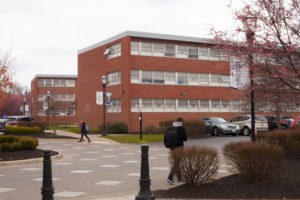The university recently finalized its master plan and announced a hike in tuition and housing rates. These developments, along with the university’s reuniting with Trinity Lutheran Seminary, have made significant changes to housing.
The university announced an increase to tuition and room and board last month.
According to Jon Geyer, director of residential and commuter life, the money we pay for housing goes toward the renovations that happen during summer, as well as the cost of running residence halls throughout the academic year.
“I think that a lot of it is unseen spent money, and a lot of that is behind the walls,” Geyer said.
Increased housing prices happen due to inflation and the age of some of our housing options; Geyer said it simply costs more and more every year to keep residence halls up and running.
As for whether this increase will continue, Geyer said it’s hard to predict, and that ResLife doesn’t have a big hand in deciding what these prices will look like, as the board of trustees makes decisions about tuition and housing increases.
Although it’s hard to know for sure what will happen in the coming years, it seems like we can expect a price increase every year. In the five years he’s been here, Geyer said the increase has been around 3 to 4 percent each year.
The renovations we can expect to happen this summer won’t be that drastic according to Geyer, but rather a continuation of older projects.
Facilities will finish a refresh of College Avenue this summer, the last of a three-summer update to flooring and paint. They will also update some of the Saylor-Ackermann shower rooms.
As always, neighborhood houses and apartments will all be refreshed, while others will get a “deeper dive” to their maintenance and will receive major updates.
One thing that isn’t on the list for this summer is Lohman.
In an article earlier this year, The Chimes reported that renovations to Lohman had been put on hold until the finalization of the university’s master plan. Now that the master plan has been finalized, it seems that any plans for Lohman have to wait until the master plan is implemented.
“Everything is a little bit ‘wait and see’ as the master plan is implemented,” Geyer said. “Part of our planning has to go stride in stride with what the master plan lays out … As we get to the point where we can talk more about implementation of some of those pieces is where you’ll see the bigger, more drastic changes.”
Lohman will be occupied the same next year as it was this year, with first-years living on the east side of the building and upper-class students getting “double-singles” on the west side of the building.
Geyer said that option of having a double room as a single in Lohman for upper-class students was “very popular,” and that’s why it was offered again during this year’s housing selection. Geyer says this option “went pretty quick” again this year.
There is no timeline for Lohman plans so far, as the master plan has to be worked through first. But fear not, Lohman “is definitely represented on [the master plan] for some change,” Geyer said.
For the past year, ResLife has been working to change the way Trinity and other graduate students experience living on campus.
Trinity students are currently living alongside undergraduate students in the Trinity apartments and townhouses, and while Geyer said this is working well, ResLife wanted to make sure grad students had “an intentional living environment” catered to them.
“We wanted grad students to feel like they had a little bit more of a community with one another and that was something they asked us for,” Geyer said.
This community will be started next year with a few houses on Sheridan.
Geyer said that the office hopes to extend graduate residence spaces to law students and other graduate students, and potentially students who are married or have families. ResLife is launching a grad and family page soon to go into more detail about how these options can be used by students.
“Really, it’s a need-based system,” Geyer said. “[Students with that need] will contact our office, and we will work to get them placed in that style of housing for the academic year.”
By changing graduate housing, ResLife opened more spaces for students to live in the Trinity apartments and townhouses, and these were added to selection for this year. This increased the number of apartment-style options for undergraduate students.
Geyer said this increase in options is not unusual, and that the university picks up neighborhood properties, especially houses on Sheridan Avenue, from time to time.
The increase in housing options may reach a plateau eventually, as the university owns most of the properties along Sheridan Avenue. Larger increases in apartment- and house-style residence options will have to wait for the implementation of the master plan.
During the first night of selection, a problem with the site’s host caused a malfunction with the university’s selection program, setting selection back an hour. Despite the hiccups at the beginning, Geyer said the rest of selection went fairly smoothly.
“We got through juniors and seniors and we still … had plenty of apartment-style housing and various types and styles of housing [available],” Geyer said.








“Renovations that happen during the summer” regardless of whether or not a student is living in the unit at the time, isn’t that right, Jon?